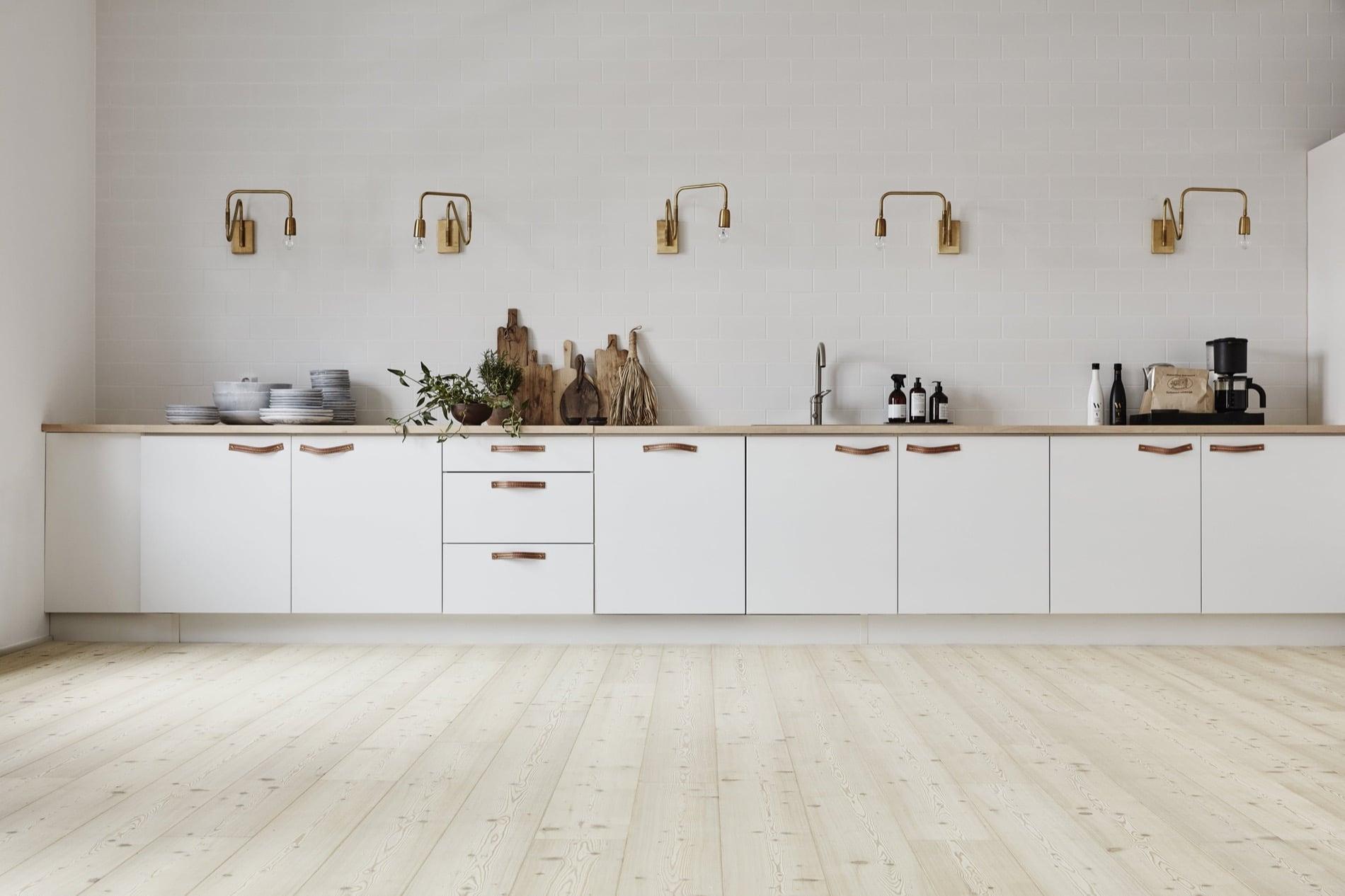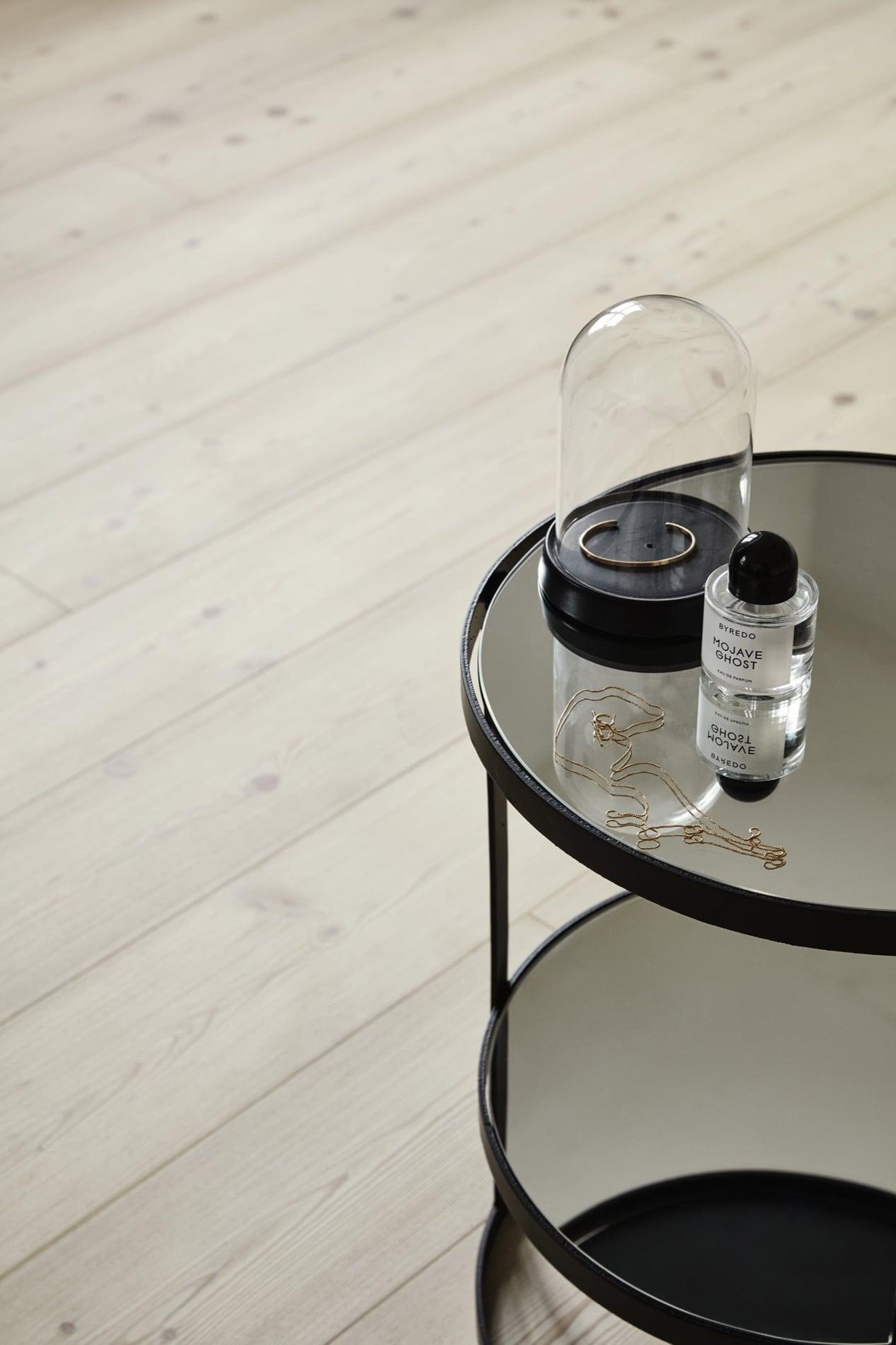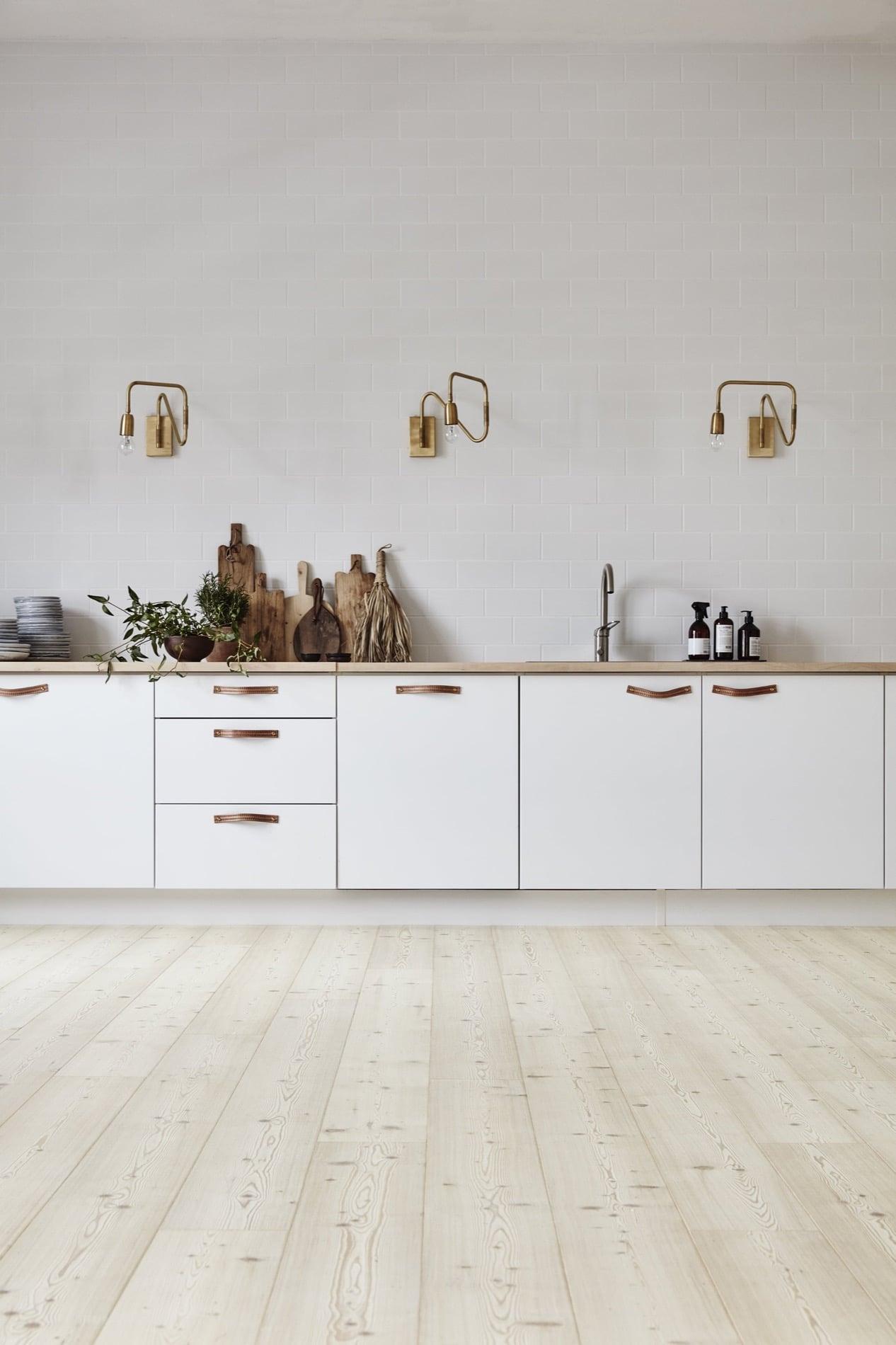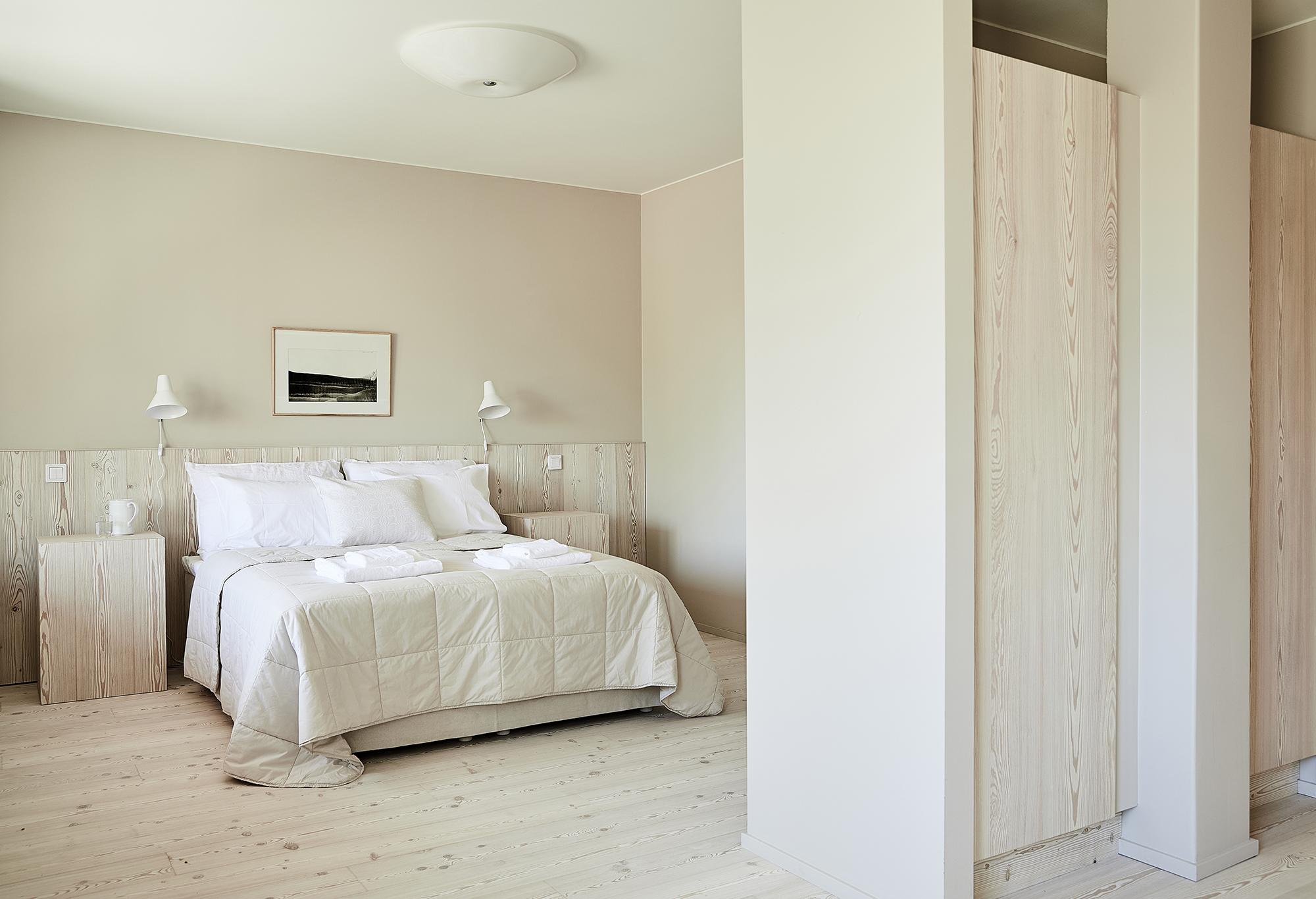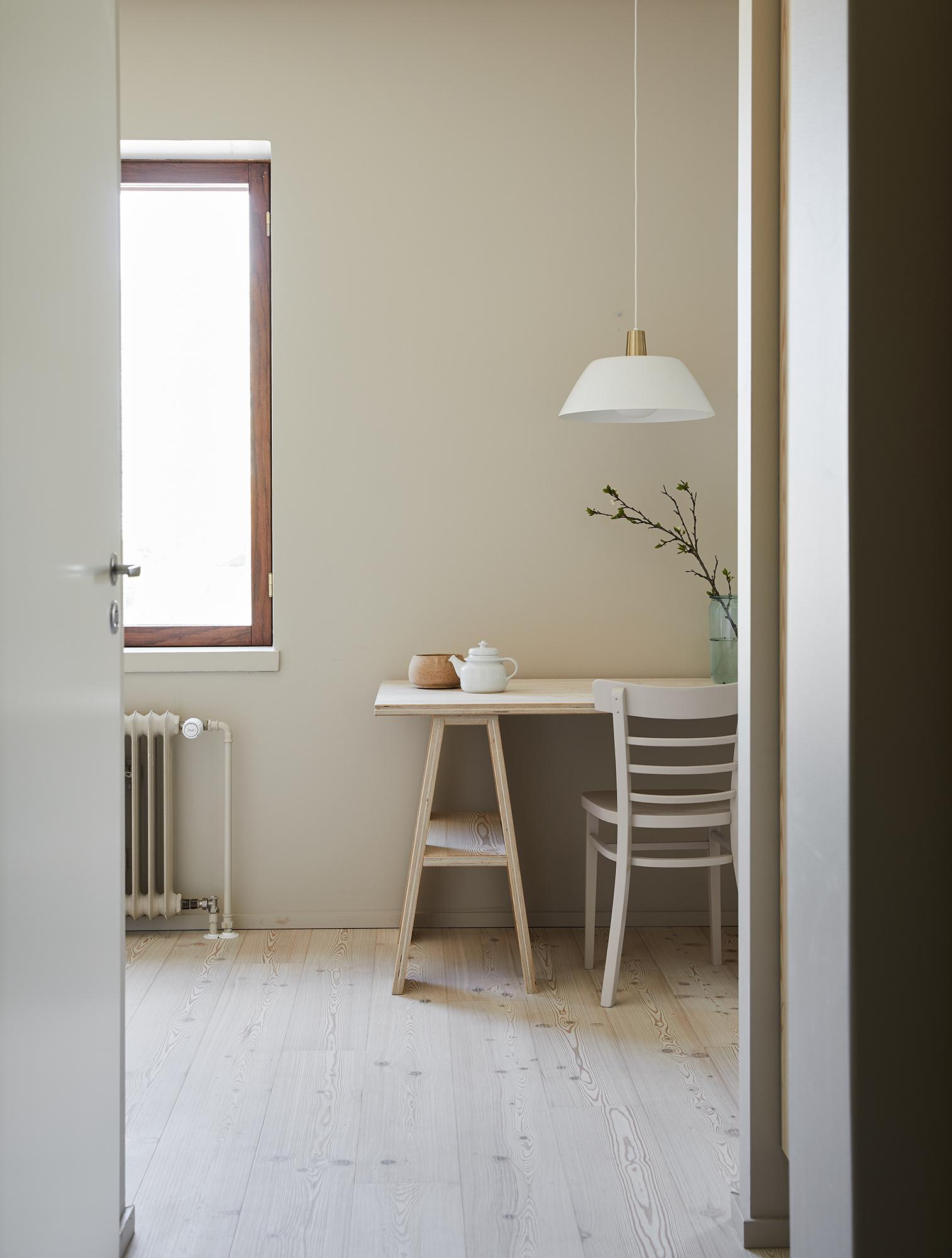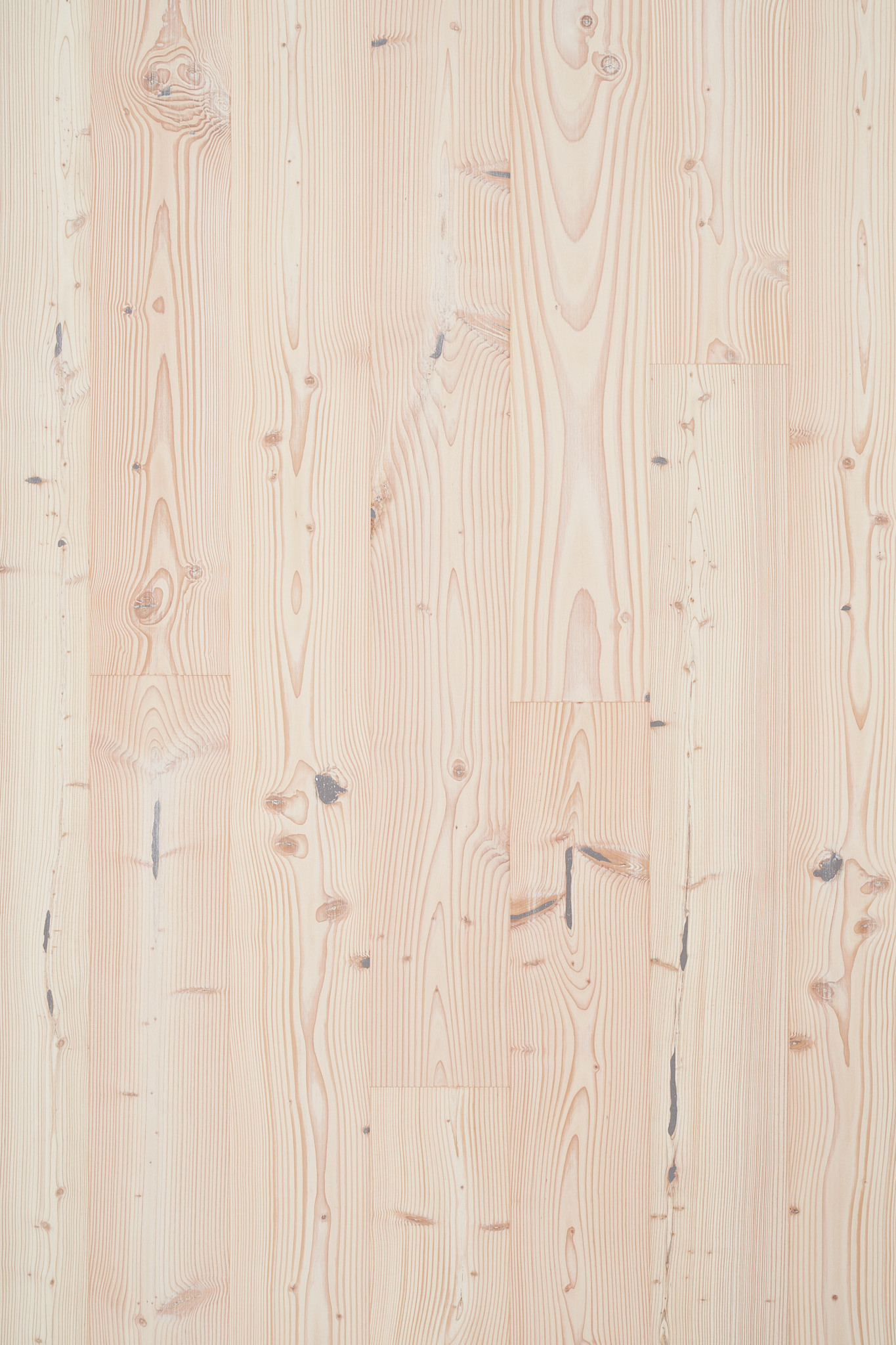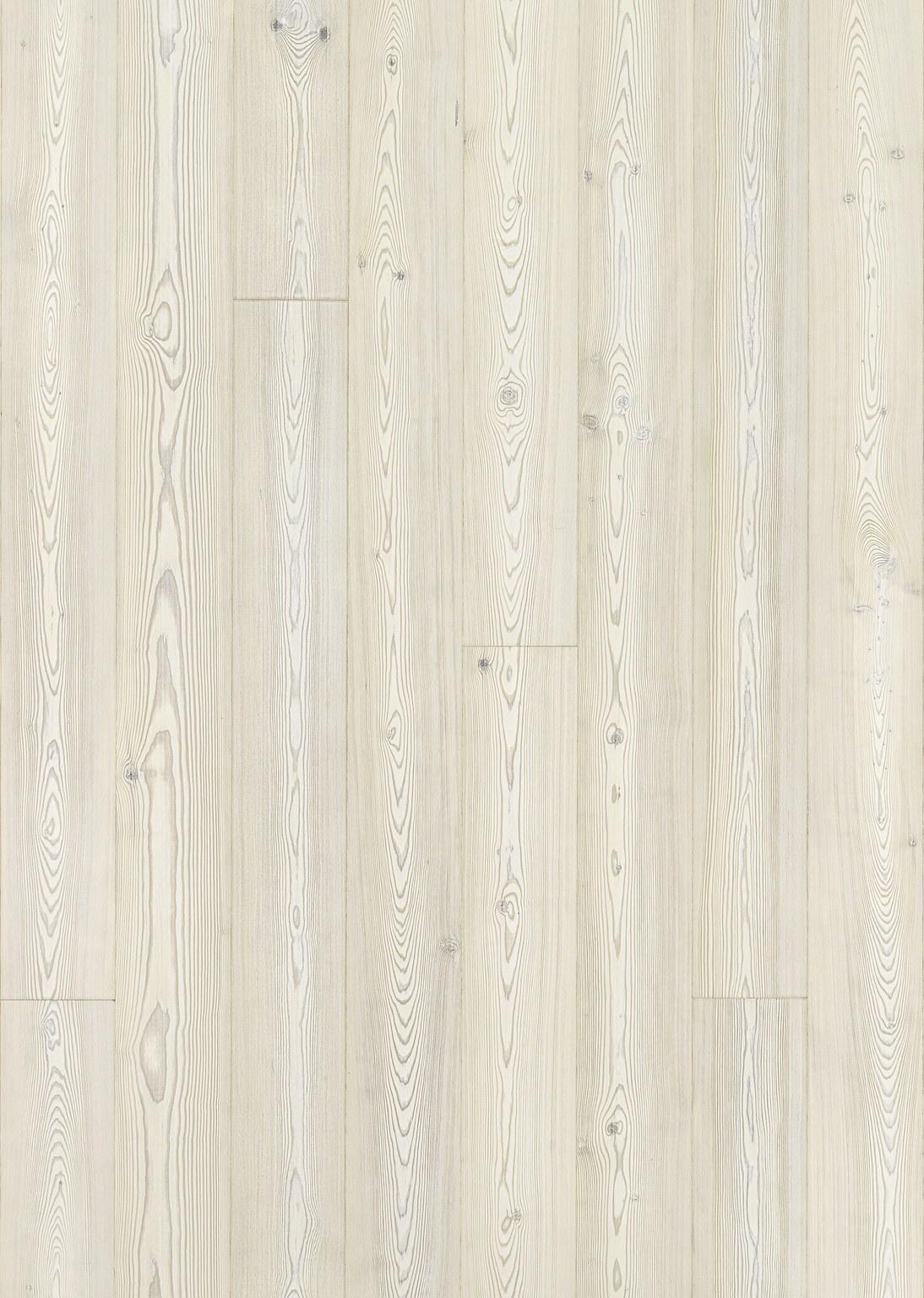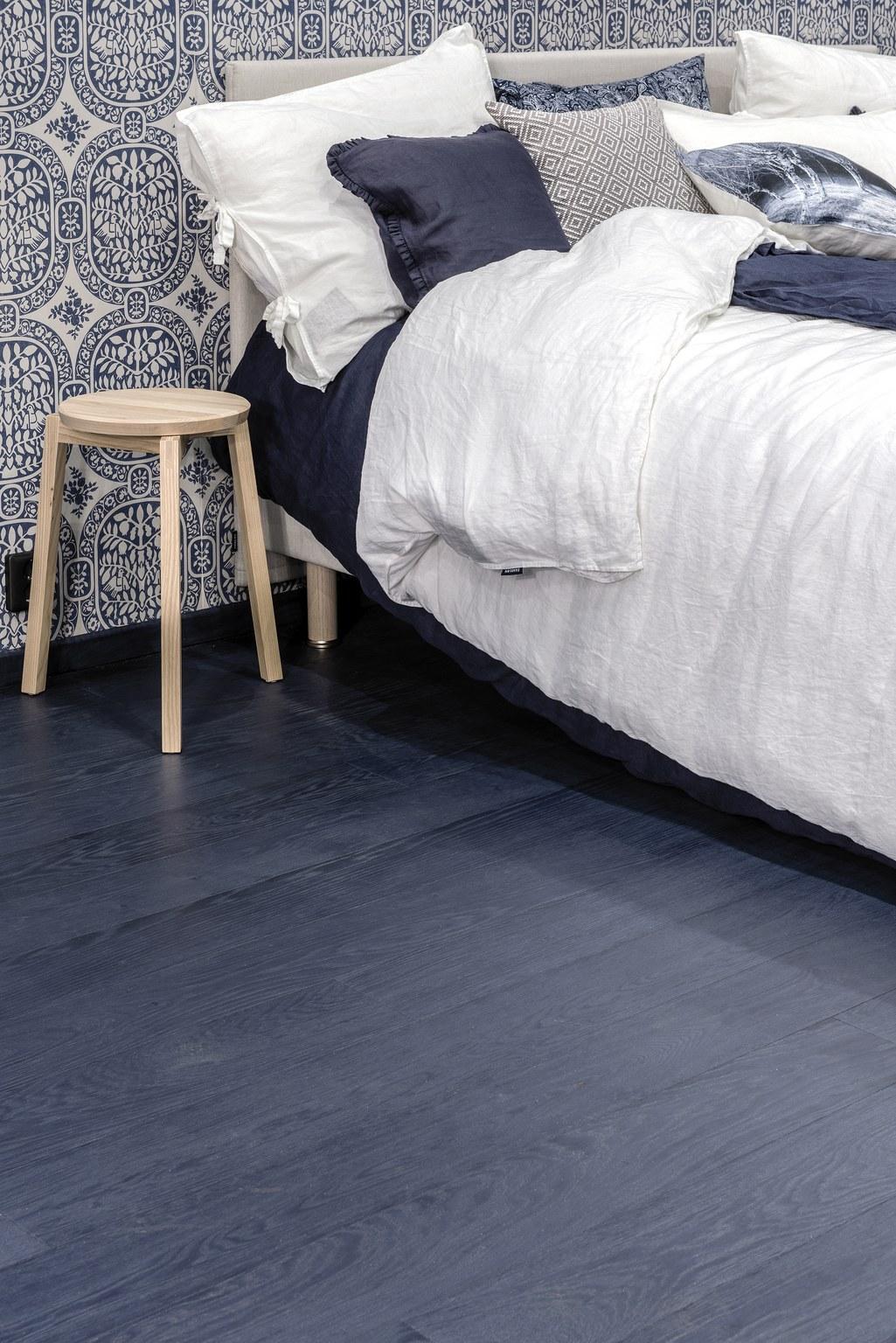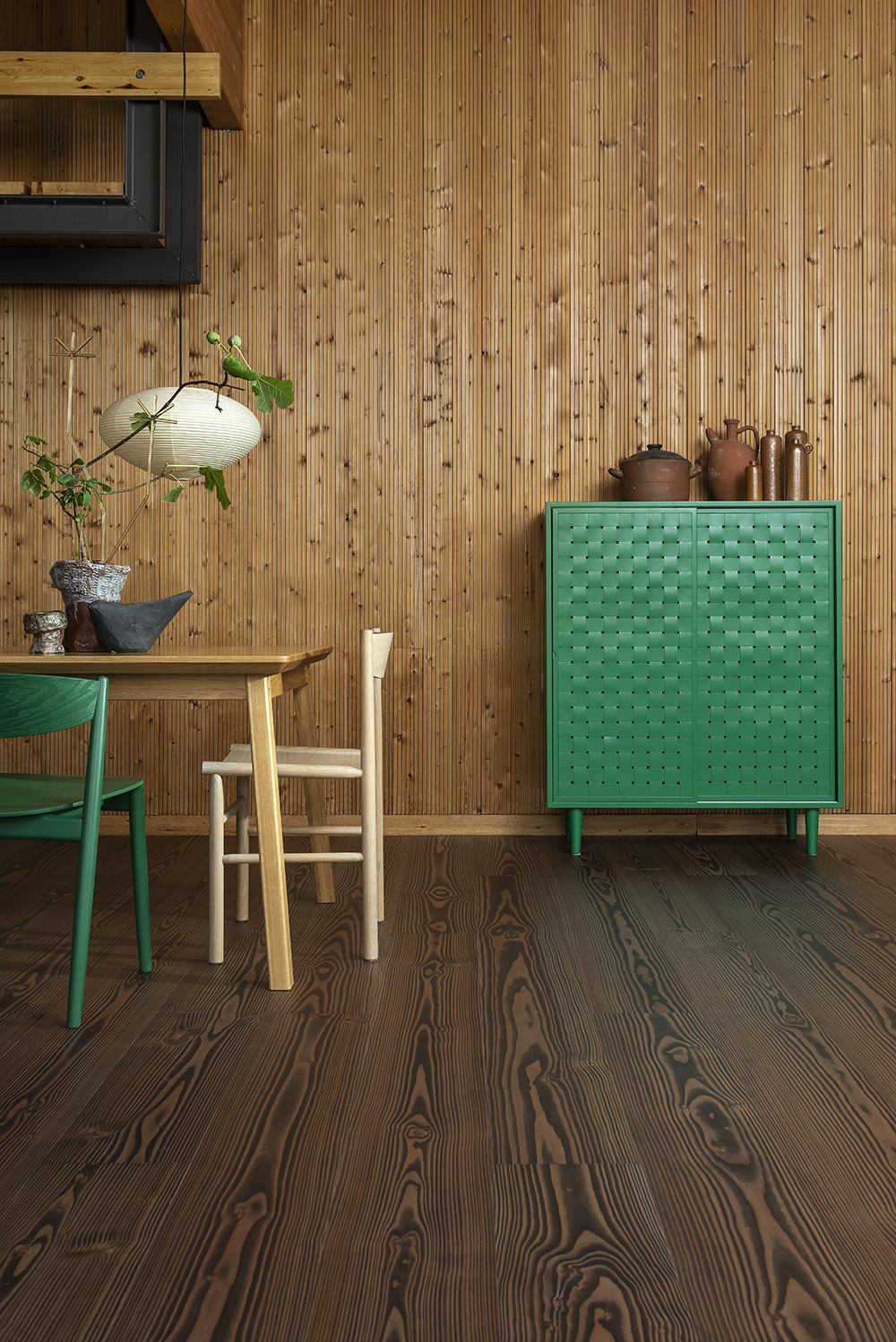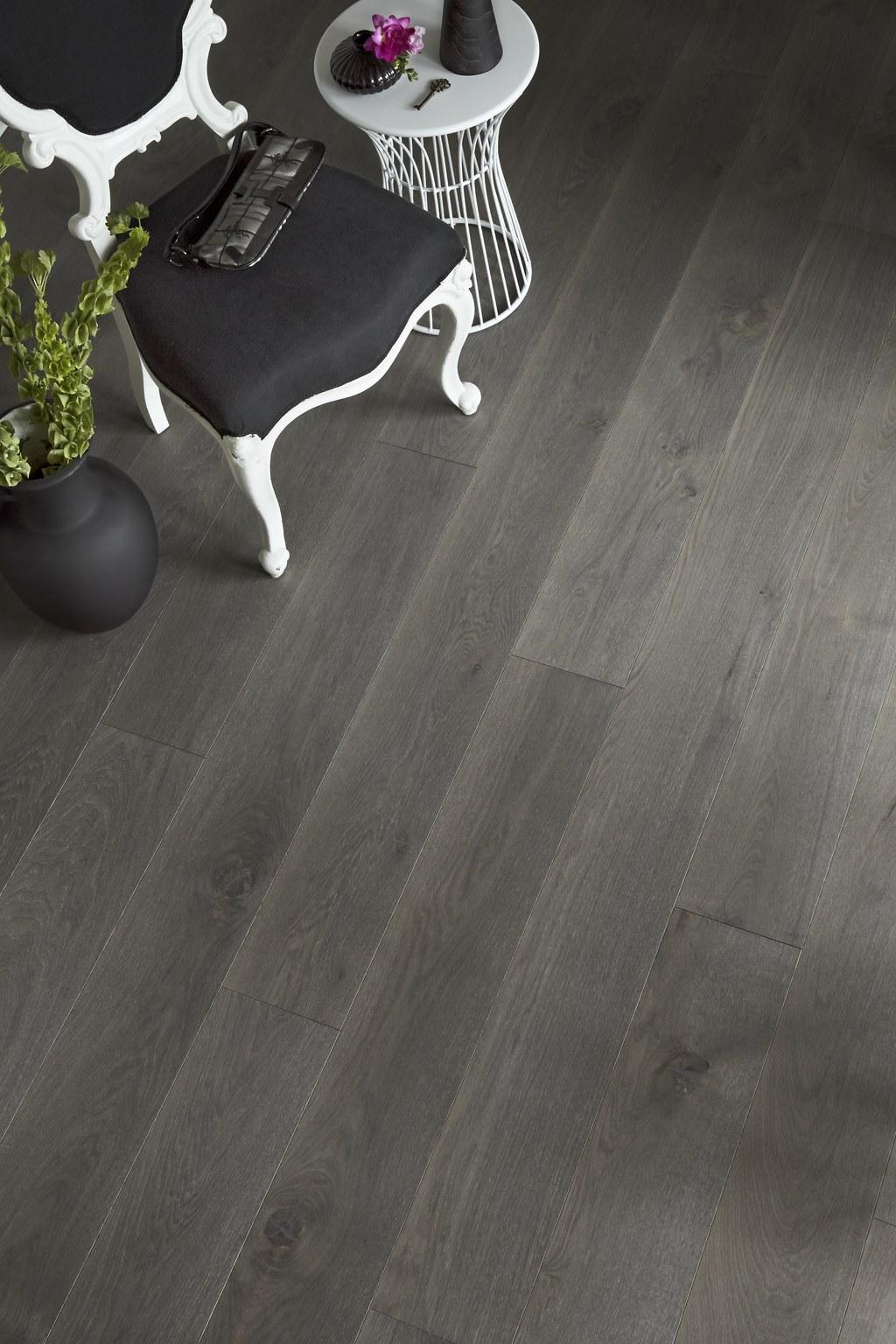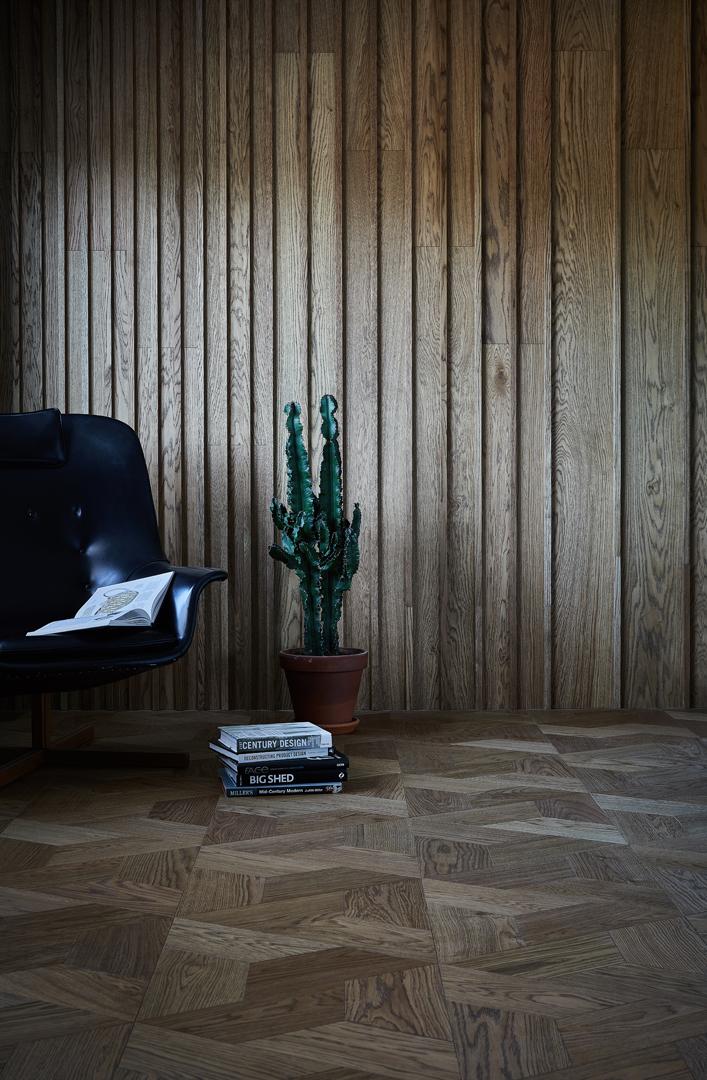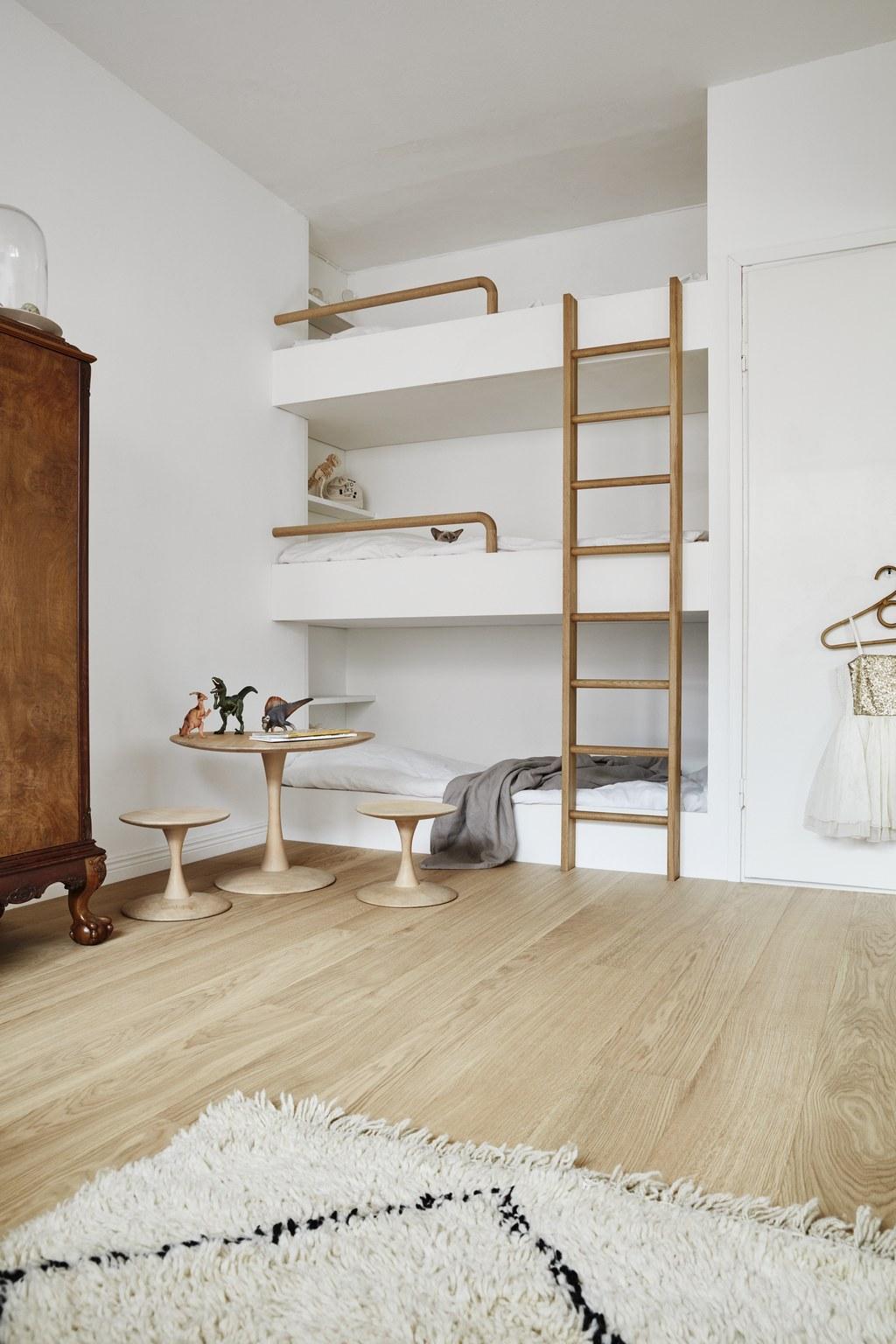Cotton
A white and flaxen flooring, in which brushing plays a major role. The tone is suggestive of traditional old wooden floors and is suited for many interior decoration styles.
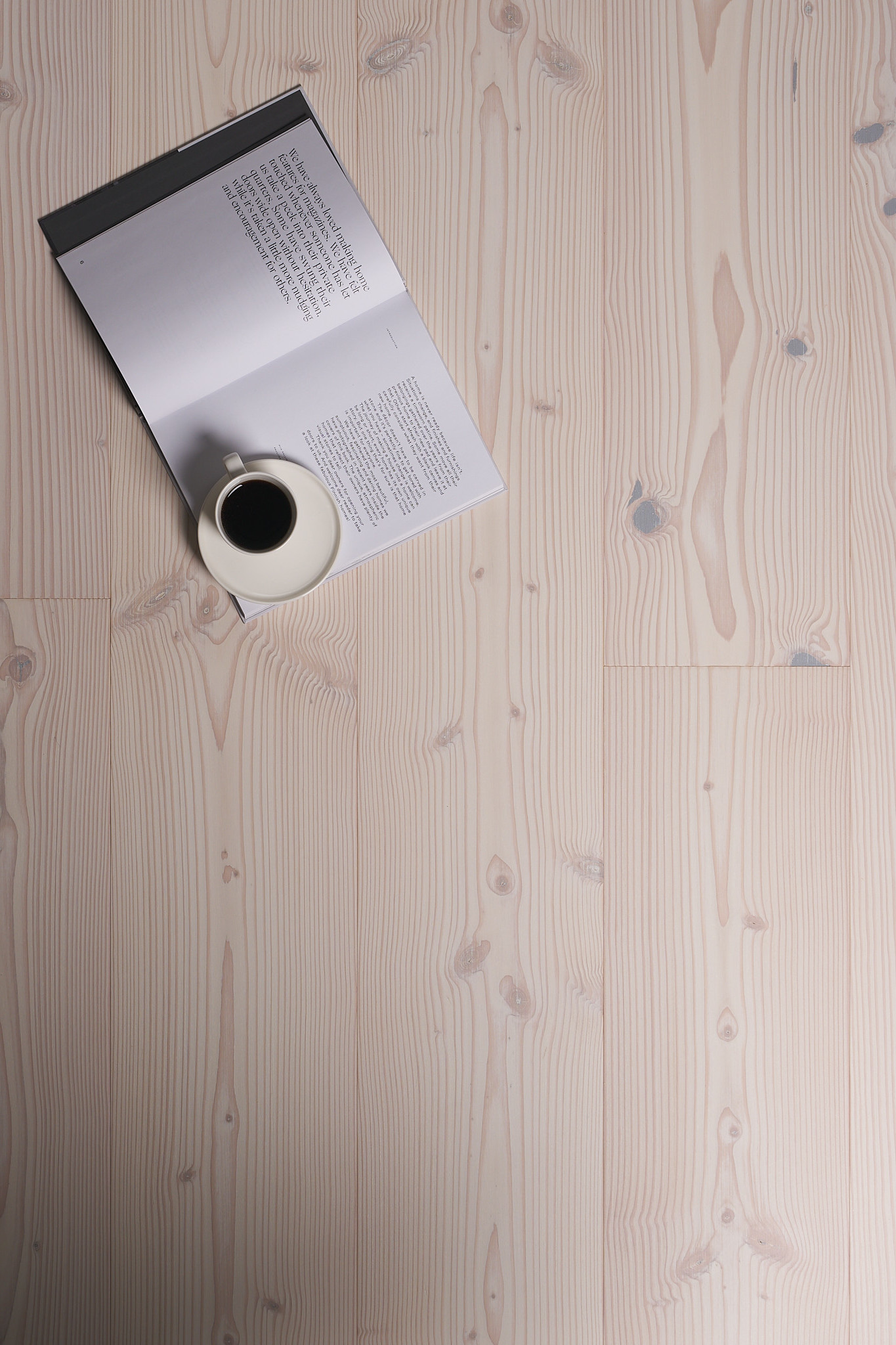
-
Wood species
When choosing a wood species, it is important to consider the different characteristics of each species, such as durability and appearance. Read about tree species and their characteristics at the bottom of the page. The choice affects the price of the product.
-
Pattern
Patterned wooden flooring is also available in this tone. The different patterns are shown on the patterned wooden flooring page. Due to the extensiveness of our product range, our website does not contain images of all the available variations. The choice affects the price of the product.
-
Width
The product is available in several widths. The width affects both the price and the installation method. Examples of this are 230 mm products that are glued from the end tongue and grooves, and 270 mm products that are always glued to the underlay. Patterned wooden flooring is always installed by gluing it to the underlay. The choice affects the price of the product.
-
Grade
Knottiness – that is, the grade of the wood – refers to the amount of knots and natural variations in tone of the different tree species.
Select is an almost knot-free grade that is as evenly-toned as can be. Available for oak, ash and larch.
Classic is the most natural grade, with small and medium-sized knots and holes filled with wood cement as well as the variations in shade that are natural for wood.
Larch Natural grade is characterised by knottiness and significant colour variations. Filled knots, as well as round knot patches and oval patches are allowed within the grade. Available for larch.
Vintage is the knottiest and most coarse-grained grade, with no limit on the number or size of knots. Even cracks and large knot holes filled with wood cement are allowed.
Olive is an ash grade with a dark heartwood alongside a light sapwood.
The Design grade is its own grade of patterned wooden flooring, and is similar to the Classic grade.
-
Treatment
Surface treatment refers to surface sanding or brushing. Brushing raises the grain pattern of the wood to the surface, exposing the structure. The brushed surface is comfortable to stand on barefoot and is recommended for families with pets and children, as scratches are not as visible as they are on smooth-polished surfaces. Sanded surfaces are flat and smooth, which facilitates cleaning. The choice does not affect the price of the product.
-
Surface treatment
Our products are available with a choice of two finishes: hard wax oil or matte lacquer. Both finishes are UV-cured, making them moisture-repellent and easy to care for. The hard wax-oiled surface is not slippery and can be repaired in places if necessary. It does not require regular maintenance oiling (such as natural oiling), but is waxed according to wear. The matte-lacquered surface provides greater abrasion resistance, and is therefore an excellent choice for lobbies, hallways and kitchens, for instance. The choice does not affect the price.
-
Installation style
The product is available with either 5G WiseLoc locking joints or conventional adhesive joints. Some products or widths are available with only a glued tongue and groove (e.g. 270 mm wide product and patterned wooden flooring). The choice does not affect the price.
Include VAT
The samples ordered from the sample shop are always tone samples only – they do not show the width, grade or pattern of the product. We recommend ordering a sample, as variations in the colour settings of different computer screens can cause the image to differ from the actual colour of the product.
Package size (m2/pkg):
- 150 x 2180 mm = 1,96 m2/pkg
- 185 x 2180 mm = 2,42 m2/pkg
- 230 x 2180 mm = 3,01 m2/pkg
- 270 x 2500 mm = 2,70 m2/pkg
All types of wood can be damaged by excessively dry indoor air. If the relative humidity of the indoor air falls below the recommended level of 35 to 60%, cracks may appear in the floor. To prevent this, remember to monitor the humidity of the indoor air, especially during winter and other dry periods. Add moisture to the air if necessary, for example with a humidifier. Larch reacts most sensitively to dry indoor air, and hairline cracks or fissures may appear more quickly than with other woods. The optimal relative humidity level for wood, 35 to 60%, is also the optimal indoor humidity for humans.
The downstairs flooring is brushed and hard wax-oiled Larch Cotton, and for upstairs we chose brushed and hard wax-oiled Larch Nordic. They were laid in spring 2018.
The floors’ strengths are durability and hardness, making them a good choice for families with children. The floors have not yellowed due to the use of mats, for example, and have lost none of their beauty. The floor is warm and pleasant underfoot, and also completely silent – no creaking.
There are also downsides, of course: they’re difficult to keep clean ‘manually’. Fortunately, this problem was solved with a high-quality floor cleaner that immediately removes water from the surface. It would be nice to hear Timberwise’s advice on a suitable material for neatly taking care of any nicks or hollows that appear. A ready-to-use filler would be best, but even just instructions for the job would be enough.
As well as that, I’ve wondered a bit about periodic maintenance of the floor – how often, and above all how and with what substances should the floor be treated? Should we use oil, for example?
Timberwise answers: Any nicks, dents or hollows can be repaired either with an elastic wood cement or Liberon filling wax, for example, following the manufacturer’s instructions. These products can be requested from our retailers or your nearest hardware shop.
If the floor becomes difficult to clean just by mopping by hand, you should consider whether it’s time for maintenance oiling. When the colourless layer of hard wax oil protecting the surface becomes worn from use, dirt will stick to the floor more easily. In this case, mechanical cleaning and maintenance oiling of the floor is a good idea. It makes basic mopping easier again. When using a floor cleaner, make sure the machine removes the water immediately from the floor surface so it doesn’t get damaged by excess water.
The easiest way to test for when it’s time for floor maintenance is the drop test. If a drop of water remains on the surface as a drop, the protective coating of the surface is still in good condition. But if the droplet spreads on the wood, the coating is no longer adequately protecting the wood surface, and so it’s time for maintenance treatment. Care instructions and products for hard wax-oiled floors can be found here.

